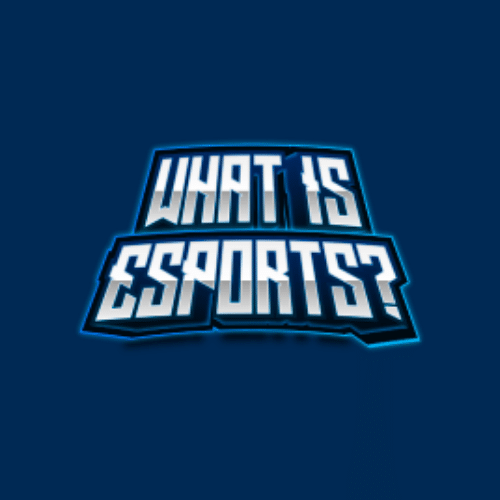Esports and Media Rights: Broadcasting the Digital Age

Updated On: October 23, 2025 by 
Discovering your most-cherished esports tournament can often feel like embarking on a quest rather than simply flicking through the channels to find a football match. We completely understand the furrowed brows and the puzzled expressions as we, too, have navigated the maze of where to catch the next grand showdown in gaming – and that’s no small feat.
That’s precisely why we’ve taken a deep dive into the somewhat tangled realm of esports broadcasting rights. This blog post serves as your guide through this intricate network of digital media platforms and traditional broadcasters that beam competitive gaming straight into our living spaces.
So if you’re ready for a virtual odyssey in esports, don’t touch that dial – keep on reading!
The Evolution of Esports and Media Rights
The evolution of esports and media rights has seen a shift from traditional channels to digital platforms, leading to a growing interest and viewership in the industry. This has also brought about new challenges for esports media rights, such as lack of recognition and monetisation, as well as competition with traditional sports.
Traditional channels vs digital platforms
We’ve witnessed a dramatic shift in how we consume esports, moving from traditional cable television to the dynamic world of online streaming. Broadcast networks once monopolised media rights, showcasing scheduled tournaments much like any other sporting event.
Now, platforms such as Twitch and YouTube hold sway over live broadcasts, allowing us to watch competitions at our convenience with just a few clicks.
Traditional TV still has its place in the esports industry for certain demographics and events but can’t match digital platforms‘ flexibility and interactivity. Mainstream broadcasters have taken notice; companies like ESPN are partnering with gaming leagues to deliver content that resonates both onscreen and online.
This blend of old and new reflects an evolving landscape where viewers expect instant access without sacrificing quality or excitement – something only possible in the digital age.
Growing interest and viewership
As esports have gained momentum, streaming platforms like Twitch and YouTube have become vital for reaching esports enthusiasts. Esports viewership has risen substantially in the digital age, with a diverse audience of internet users tuning in to watch organised gaming competitions.
The entertainment sector has witnessed surging interest from passionate gamers and novice gaming enthusiasts alike. Mainstream TV broadcasters recognising the value of esports have further fuelled this growth, ushering in a promising partnership between the two industries.
The digital broadcasting landscape for esports properties is dynamic and engaging. Viewers are not only drawn to traditional sports but also actively seeking out online gaming content through various media partnerships and content licensing deals.
Challenges for Esports Media Rights
Esports media rights face challenges in terms of recognition and monetisation, as well as competition with traditional sports. These barriers hinder the potential for growth and development in the digital age media rights landscape.
Lack of recognition and monetisation
Esports media rights have not received the same level of recognition and monetisation as traditional sports broadcasting. This is due to factors such as lack of understanding about the value of esports, limited coverage on mainstream television networks, and challenges in securing lucrative sponsorship deals.
Despite its massive global audience and revenue streams from merchandising and advertising, esports still struggles for widespread acknowledgement and fair compensation for its media rights.
The disparity between the value of esports media rights compared to traditional sports has hindered its growth and overall potential. While developments are being made in terms of recognising this form of entertainment, there is still much ground to cover before it gains parity with other major sporting events in terms of recognition and monetisation opportunities.
Competition with traditional sports
Esports faces stiff competition from traditional sports in securing media rights and viewership. Unlike established sporting events, esports struggles to gain the same recognition and monetization due to its relatively recent emergence on the media landscape.
While traditional sports have long-standing partnerships with television networks and sponsors, esports is still catching up in this regard. The challenge lies in convincing broadcasters of the value proposition that comes with broadcasting esports tournaments compared to traditional sports events.
The battle for attention between these two worlds is intensifying as both seek to capture larger audiences and secure lucrative broadcast rights deals. Esports needs to differentiate itself by showcasing its unique selling points, such as interactive experiences for viewers and engagement opportunities for sponsors, while also highlighting its growing viewer base among internet users of all ages.
Innovations for Boosting Esports Media Rights
Esports media rights are facing challenges in recognition and monetisation, but innovative approaches such as interactive experiences for viewers, enhanced sponsorship opportunities, and expanding to new broadcast platforms are paving the way for growth in this digital age.
Interactive experiences for viewers
Revolutionary interactive experiences for viewers have transformed the way we engage with esports. Now, gaming enthusiasts can immerse themselves in live matches through features like real-time statistics, player POVs, and interactive polls.
This elevated level of engagement not only enhances the overall viewing experience but also offers fans a deeper connection to their favourite games, teams, and players. As a result, passionate gamers and novice gamers alike are drawn into the excitement of esports events in ways traditional sports simply cannot match.
In-game virtual items and personalised fan experiences further enrich viewers’ interactions with their beloved esports tournaments. These unique offerings provide opportunities for fans to interact directly with the gameplay while supporting their favourite teams financially.
Enhanced sponsorship opportunities
Esports offer unique and diverse opportunities for sponsors to connect with their target audience. Brands can leverage esports events to showcase their products or services through in-game advertising, team sponsorships, and event partnerships.
These enhanced sponsorship opportunities allow brands to engage directly with the gaming community, reaching a young and tech-savvy demographic. With the growing interest in esports and the increasing viewership on digital platforms like Twitch and YouTube, sponsors have the chance to align themselves with this dynamic industry, gaining exposure in an environment highly relevant to gamers.
Moreover, esports events provide sponsors with interactive marketing possibilities that go beyond traditional sports sponsorships. From branded tournaments to custom in-game content collaborations, sponsors can create immersive experiences for fans while maximising their brand visibility.
Expanding to new broadcast platforms
Esports and gaming media rights are venturing into new territory by expanding to fresh broadcast platforms. This move opens up exciting opportunities for reaching a wider audience and engaging with viewers in innovative ways.
Streaming giants like Twitch, YouTube, and Facebook have swiftly become the go-to destinations for esports content, providing an interactive space for fans to connect and immerse themselves in the action.
These platforms also offer increased sponsorship opportunities, allowing rights holders to tap into new revenue streams and elevate the overall viewing experience.
As the gaming industry continues to evolve, it’s crucial for broadcasters to adapt their strategies and explore emerging platforms that resonate with both passionate gamers and casual enthusiasts.
Success Stories in Esports Broadcasting
Twitch has played a significant role in the growth of esports broadcasting, with its interactive features and strong community engagement. Exclusive deals with major leagues and events have also propelled esports into mainstream media, while COVID-19 has further accelerated the shift towards digital platforms for broadcasting esports events.
Twitch as a catalyst for esports growth
Twitch, a live streaming platform, plays a significant role in the exponential growth of esports. With its interactive features and massive audience reach, Twitch has become the go-to destination for esports content.
Its chat functionality allows fans to engage with each other and players in real time during tournaments and events, creating an unparalleled sense of community. Moreover, Twitch’s ability to enable viewers to support their favourite gamers through subscriptions and virtual gifts has boosted the financial viability of professional gaming as a career.
Additionally, Twitch provides an accessible platform for both passionate gamers and novice enthusiasts to watch and learn from top-tier players, contributing to the democratization of esports.
Exclusive deals and risks
Esports properties often enter into exclusive broadcasting deals with platforms such as Twitch and YouTube to reach a broader audience. These agreements offer significant exposure and the potential for increased revenue through advertising and sponsorships.
However, there are risks associated with exclusivity, as it may limit the accessibility of content to viewers who prefer other streaming platforms or traditional TV channels.
Rights holders must carefully weigh the benefits and risks of exclusive deals to ensure they maximise their reach while also safeguarding against potential limitations in viewership.
COVID-19’s impact on esports broadcasting
The COVID-19 pandemic significantly impacted esports broadcasting, pushing it further into the mainstream. The absence of traditional sports events drew more viewers and sponsors towards esports tournaments, increasing their recognition and value.
With social distancing measures in place, online gaming communities flourished as a means for entertainment and competition. This surge in interest led to increased viewership on streaming platforms such as Twitch and YouTube, highlighting the adaptability and resilience of the esports industry.
As physical gatherings were restricted due to the pandemic, many traditional sports broadcasters also turned to esports content to fill programming gaps. This shift not only introduced new audiences to competitive gaming but also fostered partnerships between mainstream TV broadcasters and esports properties.
Consequently, this period saw an expansion of broadcast opportunities for both parties, paving the way for potential growth and mutual benefit within the evolving landscape of media rights.
The Future of Esports and TV Broadcasters
We will explore the potential for growth and mutual benefit, as well as the importance of differentiation in the evolving landscape of esports and TV broadcasting. Join us to dive deeper into the exciting future of these digital age partnerships.
Importance of differentiation
Differentiation is crucial in the world of esports broadcasting. As the industry continues to expand, it’s essential for broadcasters to stand out from the crowd and offer unique experiences to viewers.
By differentiating their content through innovative features, interactive elements, and engaging commentary, broadcasters can capture the attention of passionate gamers and attract a wider audience of novice gamers.
This differentiation not only enhances the viewing experience but also sets broadcasters apart in an increasingly competitive landscape.
Collaboration between mainstream TV broadcasters and esports properties
Moreover, collaboration between mainstream TV broadcasters and esports properties is gaining momentum as both industries recognise the potential for mutual benefit. Esports has been gradually making its way onto traditional television networks, with events like The International Dota 2 Championships being broadcasted on ESPN.
This convergence not only introduces esports to new audiences but also offers broadcasters an opportunity to tap into the lucrative gaming market. Mainstream channels bring their expertise in production quality and storytelling, while esports properties provide access to a passionate and engaged audience.
This partnership can further elevate the status of esports as a legitimate form of entertainment, opening up new avenues for revenue generation and establishing a more prominent presence in mainstream media.
Potential for growth and mutual benefit
To further envision the potential for growth and mutual benefit in the collaboration between mainstream TV broadcasters and esports properties, it is crucial to recognise the evolving landscape of media consumption.
As passionate gamers and novice gamers continue to drive viewership and engagement in the world of esports, there is a mutual opportunity for both industries to thrive. With an understanding that esports viewers are internet users of any age who watch organised gaming competitions, TV broadcasters can tap into this growing audience by integrating esports content into their programming.
The introduction of mainstream TV broadcasters into the realm of esports not only elevates the visibility and recognition of competitive gaming but also provides an avenue for traditional sports enthusiasts to explore new forms of entertainment.
Conclusion
In conclusion, the landscape of esports and media rights is rapidly evolving. Esports has made significant strides in gaining recognition and monetisation, with innovations boosting the potential for growth.
The future holds promise for collaboration between mainstream TV broadcasters and esports properties, indicating a mutually beneficial partnership on the horizon. As the digital age continues to shape broadcasting, it’s clear that esports will play an increasingly integral role in media rights.
FAQs
1. What are media rights in esports?
Media rights in esports refer to the permissions needed to broadcast digital game competitions on various platforms, including live streams, TV, and online videos.
2. How do broadcasting rights affect esports?
Broadcasting rights determine how and where esports tournaments can be shown, impacting who gets to watch them and the revenue generated from audiences.
3. Who owns the media rights for an esports event?
Typically, the organisers of the esports event hold media rights but they may partner with broadcasters or streaming services to reach a wider audience.
4. Why are media rights important in broadcasting esports?
Media rights are crucial as they help protect content creators’ work while ensuring that fans have access to watch their favourite digital age competitions through proper channels.


